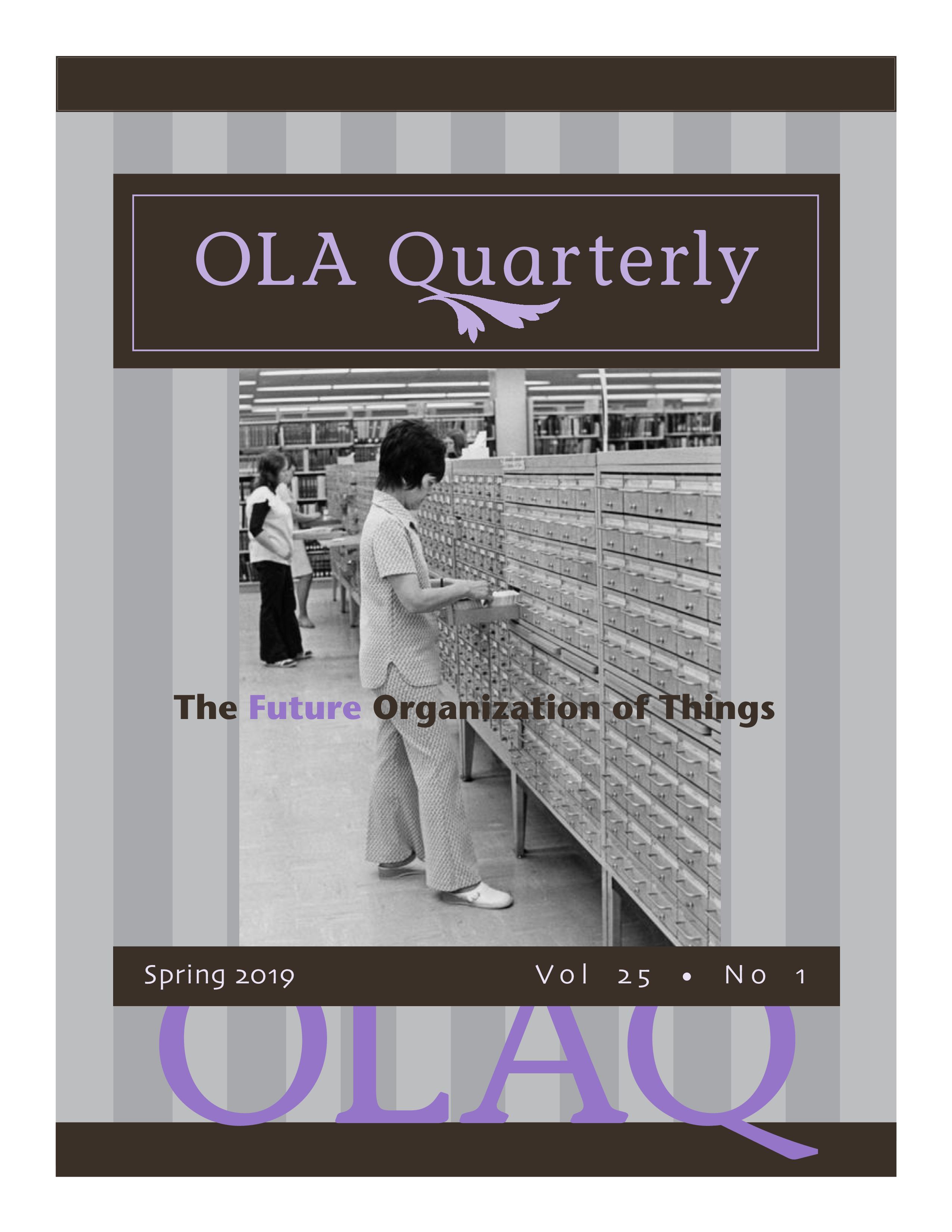Volume 25 Issue 1 Introduction
DOI:
https://doi.org/10.7710/1093-7374.1968Keywords:
Oregon librarians, Oregon libraries, Oregon Library Association, Oregon Library Association Quarterly, Pacific Northwest libraries, PNW libraries, library jobs, library careers, librarian, librarians, cataloger, cataloging, metadata, data, migration, ILS, integrated library system, organization, future organization of things, technical services, training, cataloging training, Reed College, Washington County Cooperative Library Services, WCCLS, discovery layer, BiblioCommons, Pacific University, library automation, automation, Warrenton Community Library, Seaside Public Library, ArchivesSpace, Hillsboro Public Library, design thinking, library processing, Eureka! Project, 5 Whys, Lean, archive, archives, archival, scholarly, OER, open electronic resources, Linn-Benton Community College, Mt. Hood Community College, LBCC, MHCC, facets, faceted vocabulary, faceting, faceted searching, faceted search, University of Oregon, Alma, Cedar Mills & Bethany Community Libraries, future of cataloging, cataloging trends, fuAbstract
The issue of OLAQ that you currently hold in your—er—computer screen focuses on the “future organization of things.” I titled this issue not out of laziness or a lack of eloquence, but because I did not want to reduce our work to mind-numbing and siloed verbiage such as cataloging, technical services, metadata, and the long string of jargon that our job titles have become. I wanted this issue to approach current developments and future concerns of technical library work with an ease only accomplished by consulting the humble, articulate colleagues present in this state.
This issue begins with a very succinct, informative overview of current developments in the field through a practical lens. Then, we’ll delve right in to faceted vocabulary, followed by lessons learned in making open electronic resources more accessible in the catalog. In fact, there are a lot of articles dealing with improving our systems and leveraging our collections, because that is what we do. Learn how to evaluate workflows across departments, migrate to more adept systems, automate past practices, and implement a new discovery layer. Last but not least, we’ll consider some personal insight on developing technical training within a tight budget.
I hope you enjoy reading through the experiences of your technical colleagues and learn to appreciate the important, yet oftentimes invisible, work of organizing things.






